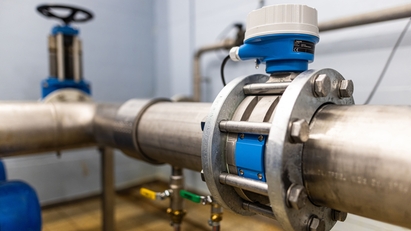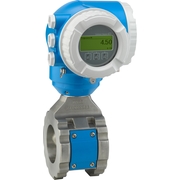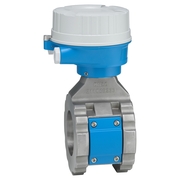Over microgolftransmissiemeting
Meters op basis van microgolftransmissie worden gebruikt in de voedingsmiddelen- en drankenindustrie, pulp- en papierindustrie en de water- en afvalwaterindustrie om het totaal vastestofgehalte van een mengsel te meten, bijvoorbeeld bij slibbehandeling. Toepassingen in afvalwaterzuiveringsinstallaties zijn klaren, vergisten en ontwateren. Terwijl totaal vaste stof vaak wordt gemeten door middel van laboratoriummonsters, is er een groeiende voorkeur voor continue inline metingen, wat efficiënter is en niet leidt tot vertragingen.
Terwijl andere sensortechnologieën voor het meten van totaal vaste stof afhankelijk zijn van de troebelheid van het mengsel, beperkt zijn tot een bepaald bereik van totaal vaste stof of veel onderhoud vereisen, zijn meetapparaten die gebruik maken van microgolftransmissie onafhankelijk van kleur of troebelheid, onderhoudsvrij en bestrijken een bereik van 0 tot 50% totaal vaststof.
Hulpbronnen besparen in slibbehandeling - continue inline meting van het totaal aan vaste stof met Teqwave MW
Microgolftransmissie: meetprincipe
Microgolven die door een medium gaan zijn elektromagnetische golven die een wisselwerking aangaan met materie op moleculair en atomair niveau. Deze interacties resulteren in absorptie en veranderingen in de snelheid waarmee golven zich voortplanten. Uit deze fysische eigenschappen kan de permittiviteit van het medium worden berekend, wat op zijn beurt de bepaling van bepaalde grootheden in het medium mogelijk maakt, zoals het totale gehalte aan vaste stoffen.
Permittiviteit is een maat voor de elektrische polariseerbaarheid van een diëlektricum. Een medium met een hoge permittiviteit polariseert meer in reactie op een toegepast elektrisch veld dan een materiaal met een lage permittiviteit.
In media met een hoog totaalgehalte aan vaste stoffen gaan microgolven sneller dan in zuiver water. Hun time-of-flight is dienovereenkomstig korter en hun demping is minder. Dit komt omdat de polariserende eigenschappen van de moleculen water een hoge permittiviteit geven. Dit verschilt van de totale vaste stof die vaak wordt aangetroffen in afvalwaterslib, dat een relatief lage permittiviteit vertoont.
Voordelen
- Betrouwbare en permanente procesbesturing door real-time en continue inline meting
- Onafhankelijk van kleur/ troebelheid of ander kenmerk van slibmengsel
- Onderhoudsarm en tijdbesparend, voor een hogere productiviteit
- Voor een brede range vaste stoffen, van primaire klaring tot ontwatering




